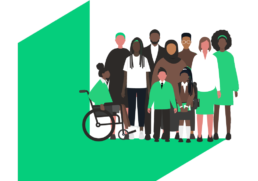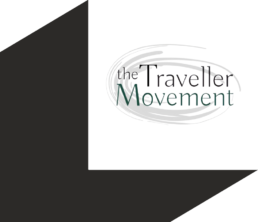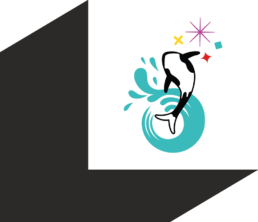Intersectionality Toolkit
Intersectionality Toolkit
Intersectionality Toolkit
Toolkit collated by Audrey Pantelis
What Is Intersectionality?
The Oxford Dictionary defines intersectionality as “the interconnected nature of social categorisations such as race, class, and gender, regarded as creating overlapping and interdependent systems of discrimination or disadvantage”.
Intersectionality is how multiple identities interact to create unique patterns of oppression.
Originally coined by American scholar and lawyer Kimberle Crenshaw, who drew inspiration from Black feminist movements in the US, the term highlights how race, gender, class, and other factors “intersect” to create unique dynamics and effects.
All forms of inequality are mutually reinforcing and must therefore be analysed and addressed simultaneously to prevent one form of inequality from reinforcing another. For example, tackling the gender pay gap alone – without including other dimensions such as race, socio-economic status and immigration status – will likely reinforce inequalities among women.
Why Is it Important to Understand Intersectionality?
Intersectionality shows us that social identities work on multiple levels, resulting in unique experiences, opportunities, and barriers for each person. Therefore, oppression cannot be reduced to only one part of an identity – each oppression is dependent on and shapes the other.
Why Is it Important for Educators to Understand Intersectionality?
Intersectionality provides a lens through which we can examine the processes, practices, policies, and structures that increase the risk of students experiencing disadvantage or discrimination because of their intersecting identities.
What Can I Do to Be More Intersectional in How I Show Up?
- Check your privilege: consider the discriminations you do and do not experience.
- Listen and learn: listen to, include and meaningfully collaborate with diverse groups of people. Hear and honour their words.
- Make space: ask yourself if you are the right person to take up space or speak on certain issues. Centre stories and actions on those with the lived experiences.
- Watch your language: recognise and correct your use of terms that marginalise others. Accept criticism and call others out.
The Diverse Educators’ Intersectionality Toolkit
- Who does intersectionality actually affect?
- Why does intersectionality appear to mostly impact women?
- What does it mean in practical terms?
- How has intersectionality changed over time?
- Why is it important to understand intersectionality and apply an intersectional approach?
Articles
Blogs
Books
Podcasts
Resources
TED Talks
Videos
Unconscious Bias Toolkit
Unconscious Bias Toolkit
Unconscious Bias Toolkit
Toolkit collated by Hannah Wilson
What Is Unconscious Bias?
Unconscious (or implicit) bias is a term that describes the associations we hold, outside our conscious awareness and control. Unconscious bias affects everyone. Unconscious bias is triggered by our brain automatically making quick judgments and assessments.
The tendency of us as humans is to act in ways that are prompted by a range of assumptions and biases that we are not aware of. This can include decisions or actions that we are not consciously aware of, as well as hidden influences on decisions and actions that we believe are rational and based on objective unbiased evidence and experience.
What Is an Example of Unconscious Bias?
An example of this bias during hiring is if the hiring panel favors male candidates over female candidates even though they have similar skills and job experience. Another well-known example is the gender pay gap.
What Influences Unconscious Bias?
Unconscious bias is triggered by our brain automatically making quick judgments and assessments. They are influenced by our background, personal experiences, societal stereotypes and cultural context.
What Is Unconscious Bias at Work?
Unconscious bias can be present in organisations and groups as well as influencing the behaviours and decisions made by individuals.
Unconscious or implicit bias refers to the associations that are made between different qualities and social categories such as race, gender or disability and are judgements that are made without conscious awareness.
These automatic preferences or stereotypes are a major contributor to a lack of workplace diversity.
How Do You Deal with Unconscious Bias?
- Accept that we all have unconscious biases
- Make considered decisions
- Monitor your behaviour
- Pay attention to bias related to protected characteristics
- Widen your social circle
- Set ground rules for behaviour
- Avoid making assumptions or relying on gut instinct
What Are the Risks Associated with Unconscious Bias?
- When judgements and decisions are influenced by unconscious bias we are, in effect, using an incomplete and inaccurate evidence base. This will lead to poor decisions.
- Unconscious bias (particularly when linked to gender, ethnicity, disability or some other characteristic) has unfair and negative consequences for the subjects of this bias. This includes unfair treatment and poorer outcomes (e.g. in health, education and employment).
- Unconscious bias can result in microagressions and discrimination.
What Can You Do About It?
The most important thing you can do is recognise that unconscious bias is likely to be influencing your actions, behaviours and decisions – as individuals and in groups and organisations.
Take time to explore the material provided on this site, reflect on your decision making (conscious and unconscious) and consider the steps you can take to minimise the consequences of unconscious bias in different situations and contexts.
One of the most important things we can do is avoid making rushed or instinctive decisions (e.g. around recruitment or assessing others). Think carefully about what could be used to support objective judgements and decisions and avoid making decisions likely to be influenced by unconscious bias (e.g. recruitment) when tired or stressed.
The Diverse Educators’ Unconscious Bias Toolkit
- Where do biases come from?
- What has formed my implicit biases?
- Which issues do I not care about as much?
- Do I interact with people that have different lived experiences than me?
- Do I understand intersectionality?
- Do I understand the different types of bias?
- What are some common types of unconscious bias?
- What is the connection between unconscious bias and microaggressions?
- What privileges do I have that others do not?
- What kind of workplace decisions can be affected by unconscious bias?
Articles
Blogs
Podcasts
Resources
TED Talks
Videos
Belonging Toolkit

Belonging Toolkit
Belonging Toolkit
Toolkit collated by Zahara Chowdhury
What Is Belonging?
Cultivating and building a culture of belonging encompasses all aspects of diversity, equity and inclusion. To put it quite simply, if employees, staff and students feel that they belong in the workplace and at school, it means you are working within and implementing effective diverse, inclusive and equitable practices. Even better, if people in your organisations can verbalise why and how they belong, you are building a great culture! Equally, DEI work is never complete; the challenge and opportunity is to create a long-term culture of belonging so that every person – past, present and future – that enters your organisation and school (and even your home!) feels they belong.
What Does it Mean to ‘Belong’?
Good question. Employees are more than their job title. Students are more than their results. Parents and carers are more than responsible adults. To belong means individuals feel seen, heard and appreciated. They feel human and are treated like humans too. Nurturing a culture of belonging can also be seen as the ultimate result of successful wellbeing strategies in the workplace: if people feel happy, respected, purposeful and that they matter – they are likely to experience a strong sense of belonging too.
How Do I Create a Culture of Belonging?
Another great question! To start with, in the words of Simon Sinek, we should view cultivating workplace cultures as an infinite process: creating a culture of belonging is ever changing and ever growing – just like the nature of work and school. If you consciously regard building a culture of belonging as an ongoing process and a continuous strategy, it is likely to actively feature in all parts of work and workplace culture.
- DEI Toolkits. It is recommended that you use all other DE&I toolkits on the DiverseEd website to build a culture of belonging. Pragmatically, create a long-term strategy and ‘deep dive’ into different aspects of creating a culture of belonging, depending on the individual needs and feedback from your organisation (for example, you might tackle flex and anti-racism first, after consulting with stakeholders in your organisation).
- Representation matters. When building teams, recruiting and selecting curriculum material, ensure you are bringing diverse voices to the forefront. This may sound obvious, but it is often an underestimated (yet crucial) part of DEI strategy. If people have representative role models with shared experiences and values, they are more likely to feel they belong in the workplace.
- Listen. Create spaces and time to listen to your staff and students. Take the conversation beyond task driven activities and get to know them as people. Championing diversity does not just mean championing a protected characteristic; it means valuing the whole person and their ongoing lived experiences. For example, prioritise belonging in your training and development; consider times in the school and working day that could be reconfigured to get to know one another: this could be lunchtimes or dedicated ‘open door policy’ times too.
- Environment. Create an environment that is inclusive and fun! Go beyond displays and think of school and work as ‘home from home’. How can you make your employees feel comfortable and welcome in their place of work? Ask them.
- Professional relationships. An often underestimated or overused initiative, but effectively creating workplace coaches or buddies can build positive and trusting relationships in the workplace. Effective training and CPD in coaching and mentoring not only up-skills your staff, but helps nurture positive connection in the workplace too.
- Empathy, trust and compassion. Three key leadership traits, which will benefit all employees. Firstly, outline in your culture and environment that you’re all on the same team – you trust, champion, respect and support one another. Success, results and personal development are heavily rooted in trust in the workplace. Creating a culture where empathy and compassion are key features in all areas of work and school (from HR policy to safeguarding and curriculum strategy) highlights that your people matter and feel appreciated and respected.
The Diverse Educators’ Belonging Toolkit
- How strong is my sense of belonging in my workplace?
- How do we create and maintain a culture of belonging for all of our stakeholders?
- How do we know who feels seen, heard and appreciated?
- How has our strategy for belonging been designed and how is it evolving?
- How is our strategy for belonging communicated?
Articles
Blogs
Books
Podcasts
Resources
TED Talks
Videos
Class Inequality Awareness Toolkit

Class Inequality Awareness Toolkit
Class Inequality Awareness Toolkit
Toolkit collated by Georgie Williams
What is social class, and what is class inequality?
Social class is the division of a society based on the perceived social status and economic status of individuals – it is not simply the wealth an individual earns that determines what social class they are considered to belong to. Generally, we think of class being separated into three categories – upper class, middle class and working class. However, changes to labour practices and the characteristics of social groups in the turn of the century has led to revisions in how class is determined and defined. In 2011, the Great British Class Survey (conducted by the BBC) revealed seven distinct class categories; these class categories were described as ‘elite’, ‘middle class’ (broken down into established and technical middle class), ‘new affluent workers’, ‘traditional working class’, ‘emergent service sector’ and ‘precariat’. The latter four vary in terms of their financial income and the perceived value of their ‘social contacts’, but all would fall under pre-established notions about the ‘working class’- labourers or low income workers. It is this fracturing of social classes into sub-categories that illustrates how unclear it can be who is or isn’t at risk of class inequality or restricted social mobility.
Class inequality occurs when resources in a given society are distributed unevenly, typically through norms of allocation, and reinforce specific patterns along lines of socially defined categories of persons. Class inequality ensures only particular families have access to higher education for their children, access to particular schools or housing, access to high or low quality healthcare and even transportation or financial services. There are ways to resist or reverse the impact of class inequality through organisational support and conscientious behaviour as an individual.
Class inequality awareness (on personal and organisational levels) includes:
- Challenging classist language and slurs (e.g. “chav”, “benefits scrounger”)
- Inclusive hiring practices (e.g. “blind” CV and application form screening, adjusting job specifications around educational background, removing need for driving licence/car where possible)
- Providing training and upskilling for free/ reduced rates, accounting for socioeconomic background
- Running inclusive & affordable social events (avoiding expensive meals, trips or events which require a pre-established skillset or knowledge background), or challenging class-excluding events when organised
- Providing or supporting flexible working arrangements for parents/caregivers
- Providing or supporting financially accessible transportation schemes
The Diverse Educators’ Class Inequalities Awareness Toolkit
- How do I challenge classist comments and stereotyping?
- How do I champion equality and fight for equity?
- How do I share any privilege I have to centre those who are marginalised by society and the system?
Blogs
Books
Podcasts
Resources
Videos
Powerful Histories

Powerful Histories
Powerful Histories works extensively with schools, both in the UK and internationally, to diversify curriculums through the exploration and application of global teaching methodologies and indigenous knowledge systems.
Understanding not just ‘what we learn’ but ‘why we learn it’ and ‘how we learn it’ forms the basis of the Global Curriculum Project, an initiative which seeks to bring together teachers, students and educationalists to research, produce and share knowledge on curriculum development, diversity and community change.
UK Feminista

UK Feminista
UK Feminista works to end sexism in schools – including sexual harassment, sexist language and gender stereotyping. We conduct research, deliver training for teachers, and provide resources for schools.
Ofsted recommended UK Feminista’s training and resources in its ‘Schools and early education update: September 2021’.
The Traveller Movement

The Traveller Movement
The Traveller Movement’s Education Information & Support website is designed to assist Gypsy, Roma and Traveller parents and young people in accessing all areas of education in a way that is accessible, approachable and specific to GRT communities. We aim to help make families aware of their legal rights and entitlements, to help build individual and community capacity, confidence and digital inclusion.
We want Gypsy, Roma and Traveller parents to feel empowered to challenge the injustices they may face within educational settings and have a say on how educational providers operate. Education dictates our future opportunities and it is right that Gypsy, Roma and Traveller families receive the same decent level of education as everyone else, to secure their future opportunities and benefit the wider aspects of life as a whole.
We are combining this website with our already existing Education Advice and Advocacy Support Unit. Our desire for GRT families is to provide a space place to seek information and help, with a back-up support service for those who need extra help, or have a situation so complex the information and support offered on this website will not be helpful. We hope this approach will enable us to maximise our outreach and provide a much needed guide for communities who are well known to be denied a decent education through the exceptional level of bullying faced.
Menopause in Schools

Menopause in Schools
Helping schools and teachers navigate perimenopause and menopause so that they can get back to the learners they care about.
Schools are unique environments with high demands on our organisational skills, memories, and emotional and stress management. Teachers have to be in a certain place, at specific times with a set group of people. Flexibility is a challenge.
This causes particular problems when dealing with menopause and perimenopause symptoms such as brain fog, memory loss, mood swings, menstrual flooding, bowel and bladder problems.
Teachers can lose confidence, classroom management and performance can be affected and their overall wellbeing suffers. There can be unexplained and avoidable sick absence, and many teachers leave their jobs.
These problems can be solved, but they have to be recognised and addressed.
I offer menopause education specifically for schools – I talk about menopause and perimenopause, how they have an impact in a school context and how we can help ourselves and support each other.
I help you write those all important menopause policies, so that they are a true reflection of the needs of your staff and of what your school is able to offer – and I can do that in consultation with your staff.
I offer a range of workshops, support groups and courses so that teachers can understand what’s going on in their bodies, work through the options available to them, find the strategies that work for them, solve problems in the classroom and get back to being confident, talented, thriving educators.
Our Leading the Diverse Curriculum Training
Our Leading the Diverse Curriculum Training
Our Leading the Diverse Curriculum Training
Our Training Offer
We support teachers, curriculum/ subject/ phase leaders, and senior leaders responsible for curriculum design to diversify the curriculum in your school.
We deliver individual workshops and talks – virtually and face to face – but due to demand we are now launching a programme of curated sessions to support you on your journey to make your curriculum more inclusive and more representative.
This programme will support you in raising consciousness, developing confidence and building competence in how to diversify your curriculum design, delivery and resources.
Our 6-part programme will support you throughout an academic year, through a half-termly virtual session.
The programme content is detailed below:
Session 1: Curriculum Vision
To be able to rationalise and clarify the direction of diversity in the curriculum work to ensure that there is shared vision and unified purpose in schools.
Session 2: Curriculum Thinking
To ensure that the curriculum work is rooted in sound curriculum principles that align with a school’s vision, mission and values.
Intersessional Activity 1:
Review your curriculum policy and your subject’s curriculum intent statement through the lens of the 9 protected characteristics and through the lens of your school’s values.
Session 3: Curriculum Evaluation
To explore practical mechanisms for curriculum evaluation, considering change models and implementation strategies.
Session 4: Curriculum Adaptation
To explore methods of adapting the curriculum to ensure that it is meaningfully diverse within a social justice framework.
Intersessional Activity 2:
Review your curriculum across subjects in light of the previous two sessions and identify strengths and areas for development to feed into an implementation plan for adaptation of the curriculum.
Session 5: Curriculum Conversations
To create safe spaces in which to authentically activate student and parent voice to gauge how the curriculum is received.
Session 6: Curriculum Controversies
To explore ‘controversies’ in creating a diverse curriculum to be able to manage the emotional wake of the work.
Intersessional Activity 3:
Create a 1 page/ 500 word report summarising how you have applied your learning and evaluating the impact from these sessions to demonstrate how you are leading the diverse curriculum in your context.
- Summit Learning Trust
Bennie provided an outstanding start to our year, giving our staff a myriad of ideas and concepts which they can use on the long journey to a more diverse curriculum. She was highly knowledgeable, but also wore her expertise with a humility and practicality that made staff believe that they could make real progress.
Heath Monk, CEO, British School in the Netherlands
Our Inclusive Workplaces Training
Our Inclusive Workplaces Training
Our Inclusive Workplaces Training
Our Training Offer
We support schools and trusts in reflecting on how truly inclusive they are as workplaces.
We deliver individual workshops and talks – virtually and face to face – but due to demand we are now launching a programme of curated sessions to support you on your journey to make your school a more inclusive workplace for all of your employees.
This programme will support you in raising consciousness, developing confidence and building competence in how to review policies, practices and processes to ensure that inclusion is at the core of your employer’s promise to your staff.
- Becoming a culturally-intelligent school
- Becoming a life-friendly school
- Becoming a menopause aware school
- Becoming an anti-racist school
- Becoming a disability aware school
- Becoming a trans-inclusive school
- OTSA
- Summit Learning Trust
A safe space was created for staff to share. Great starting point for our DEI journey as a school.
Clare Pellew, Deputy Headteacher

